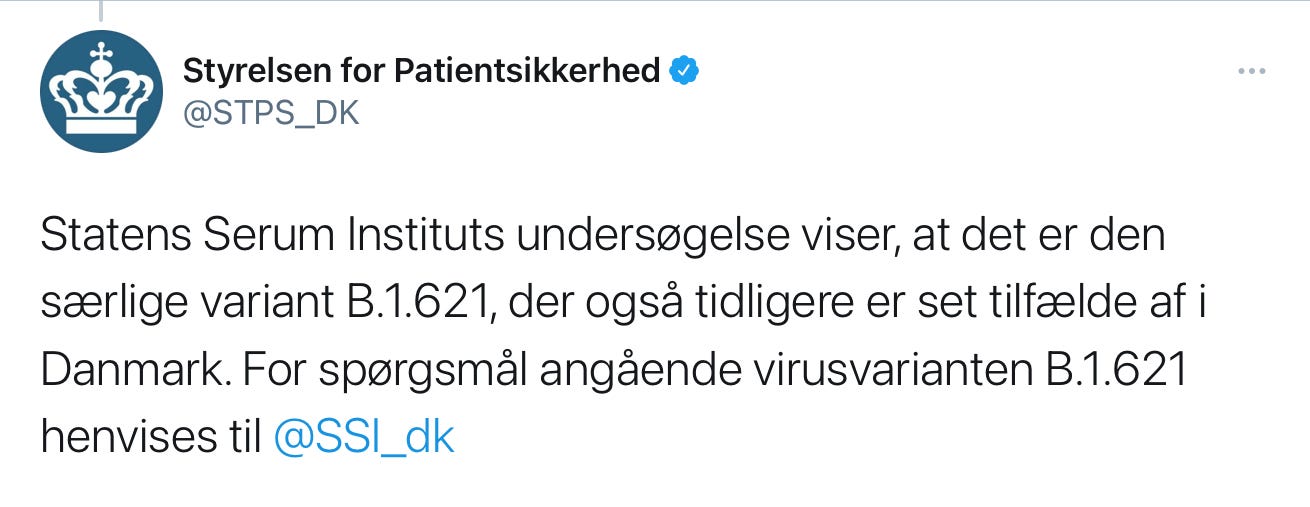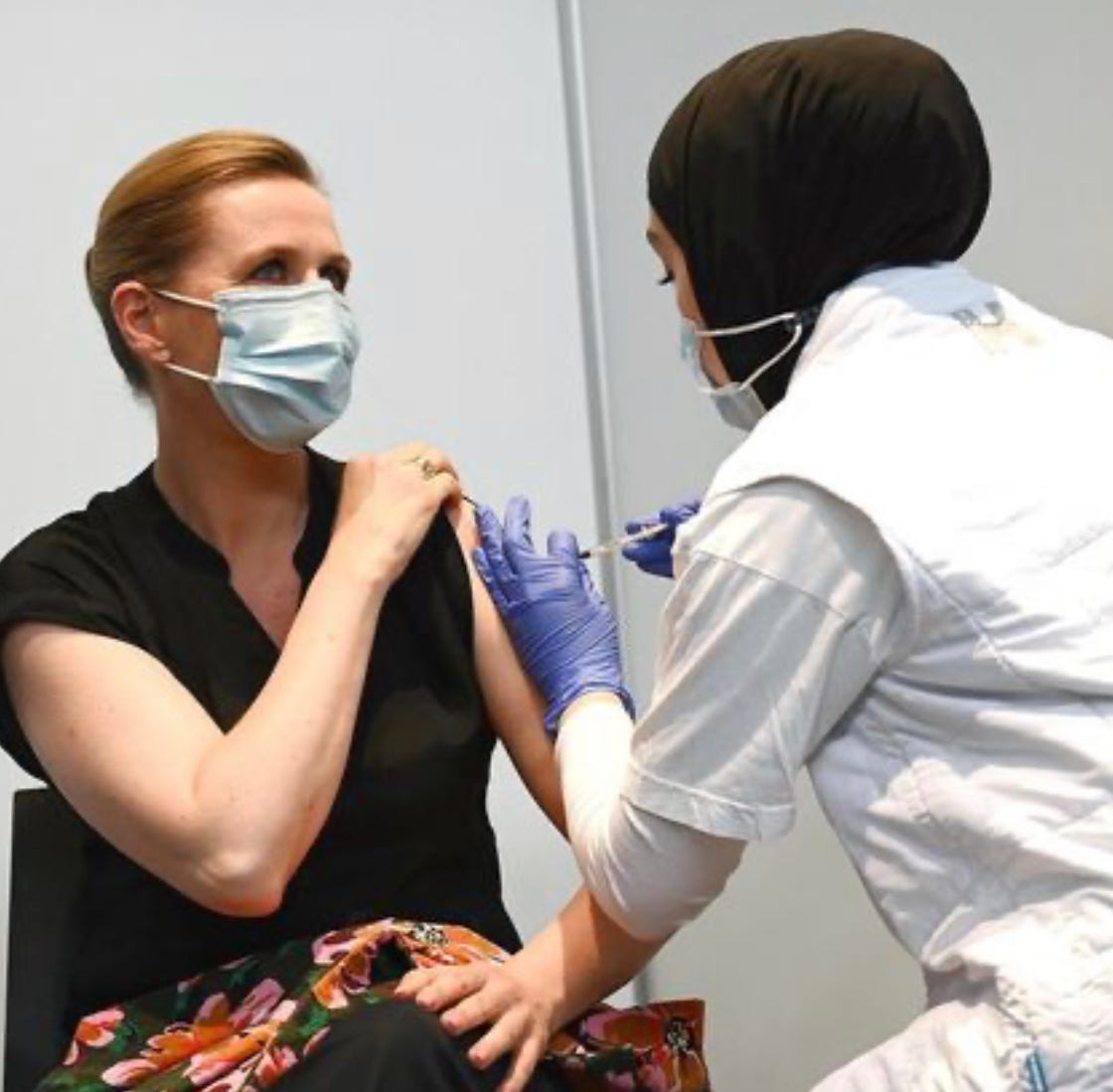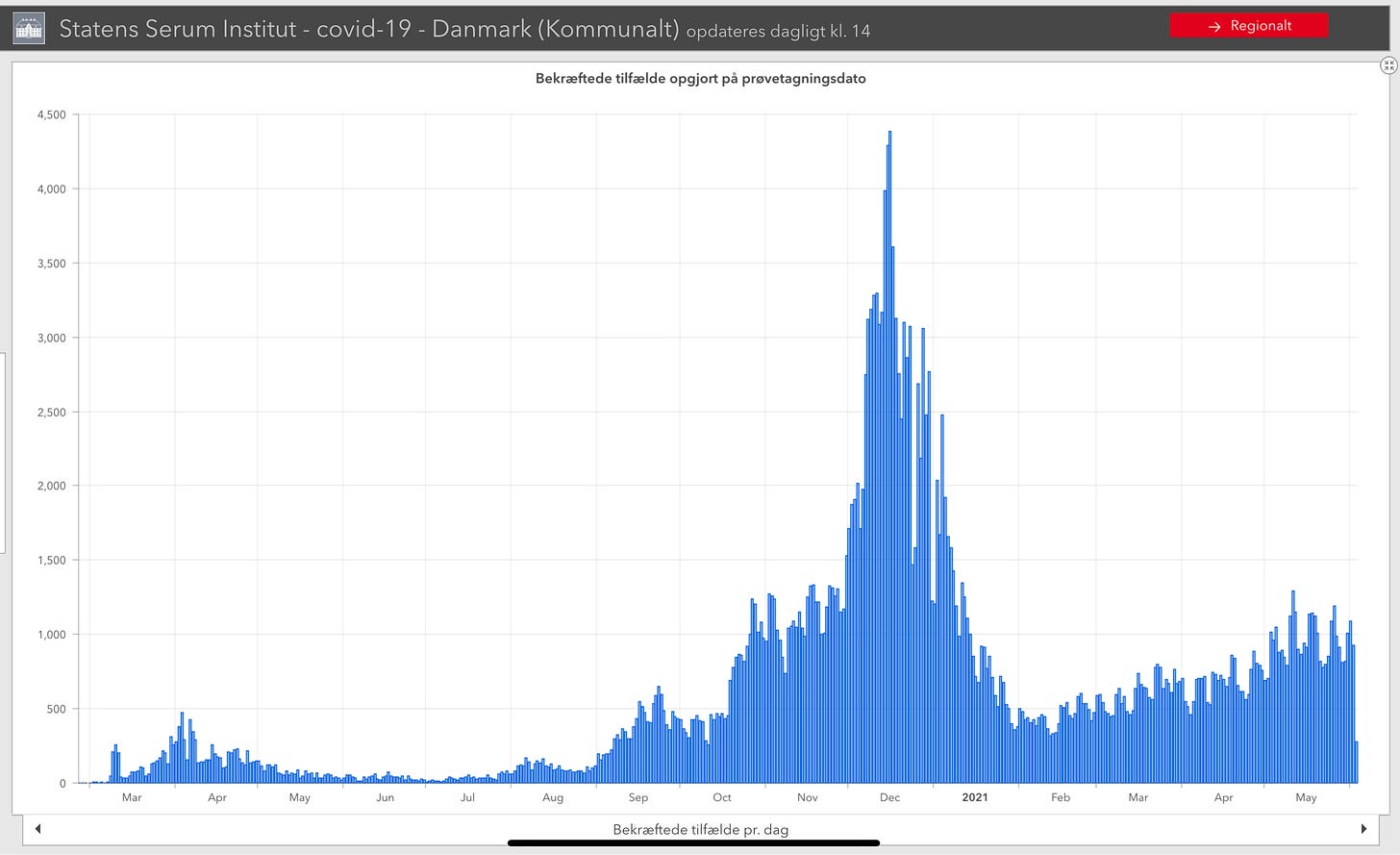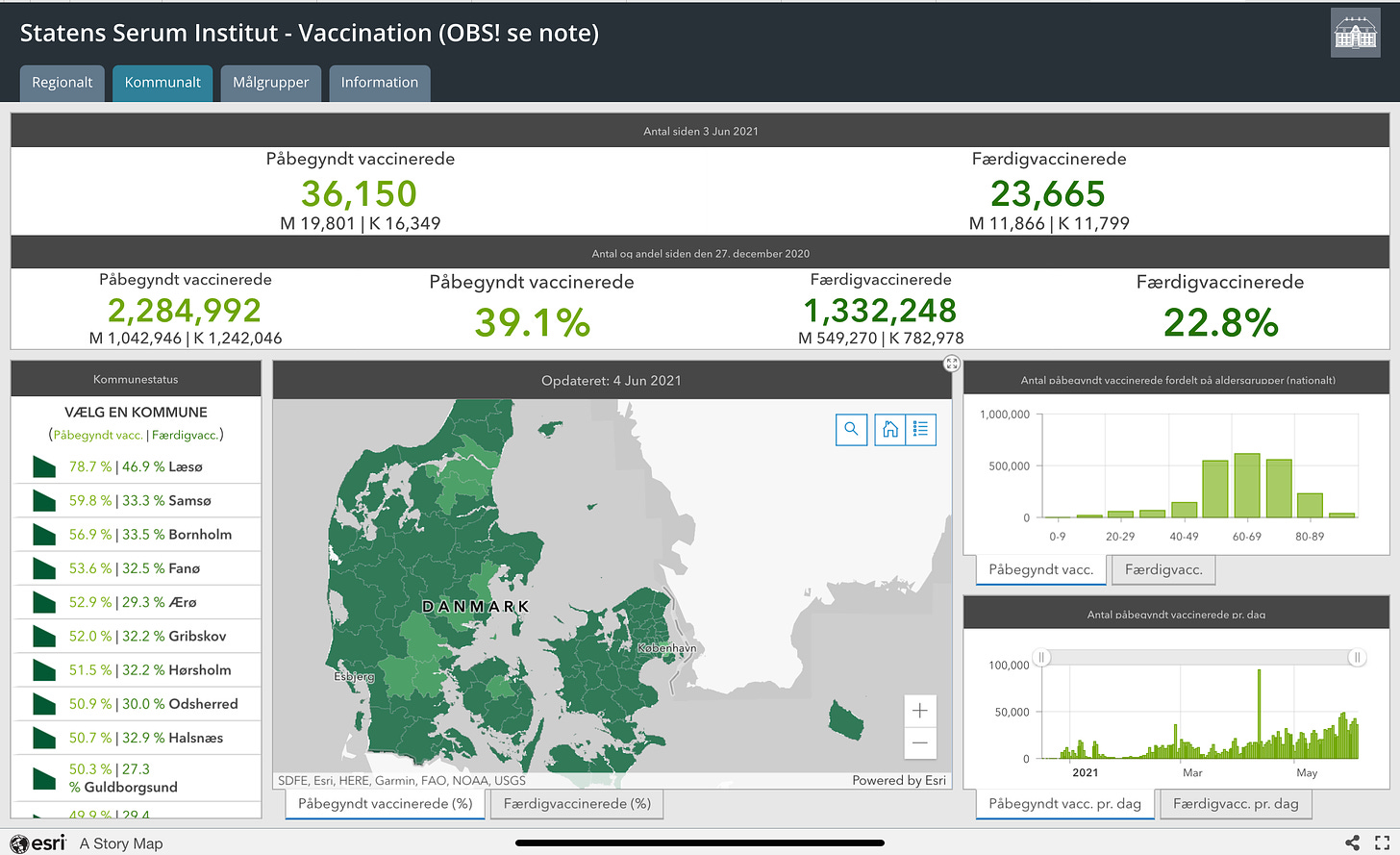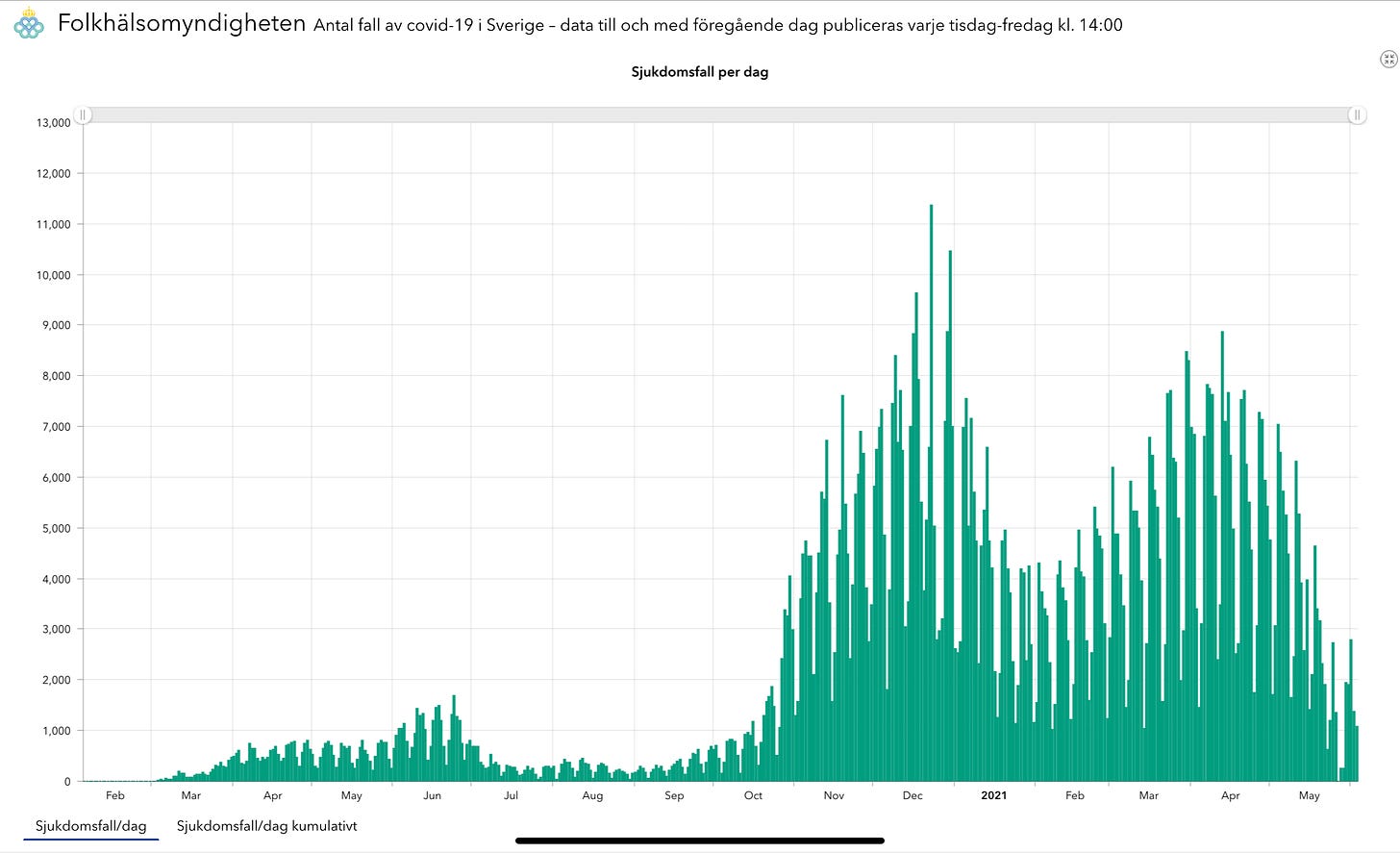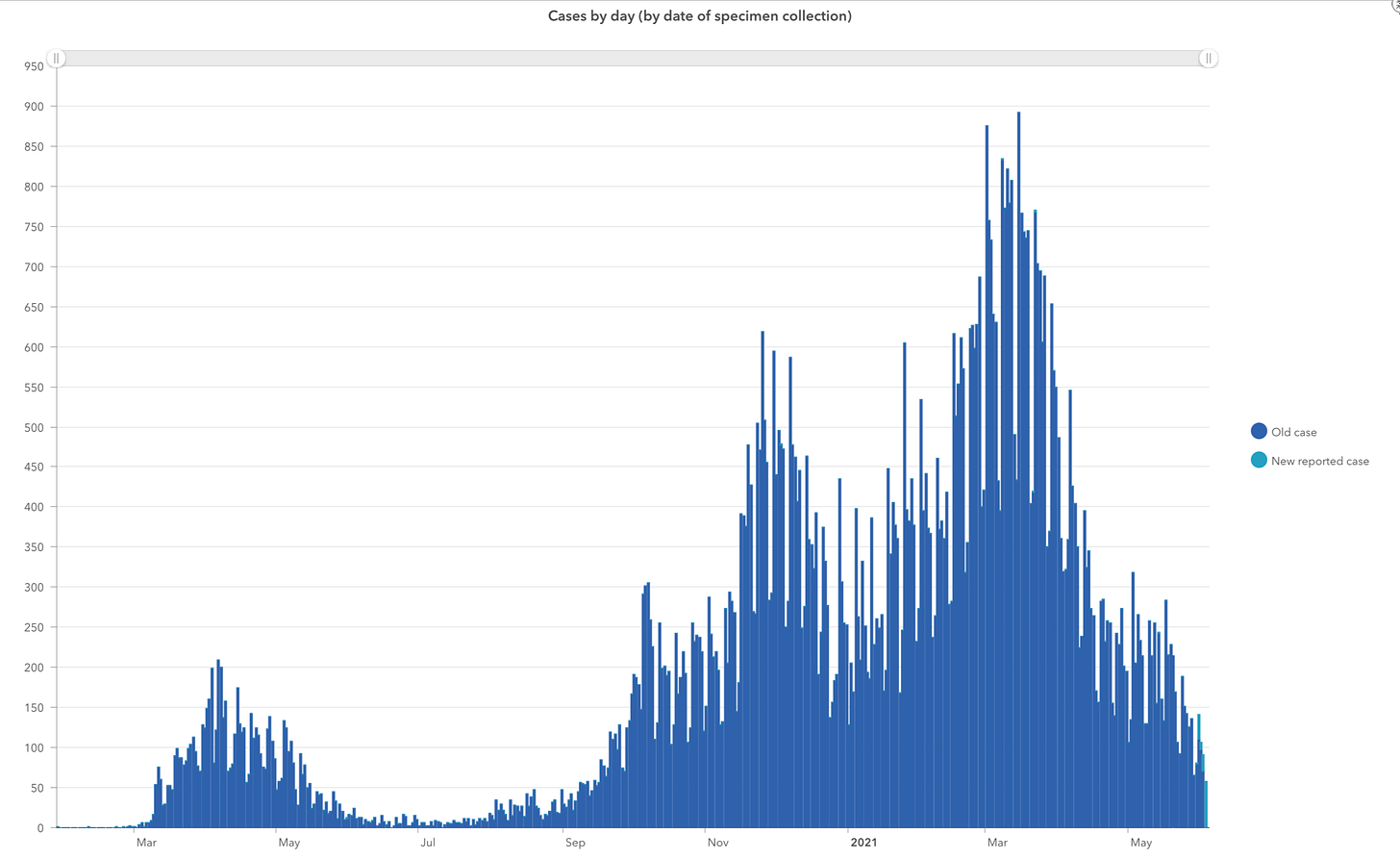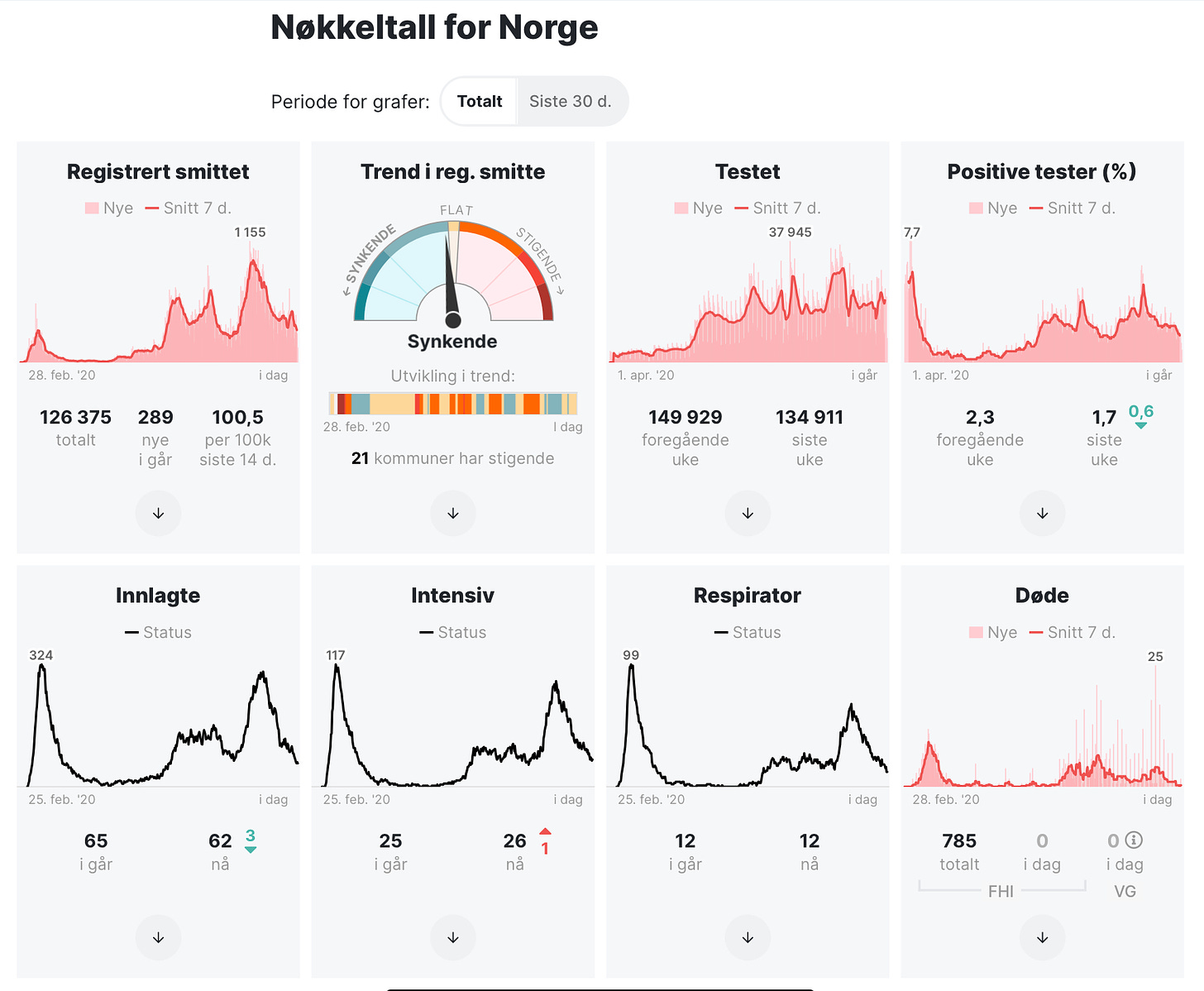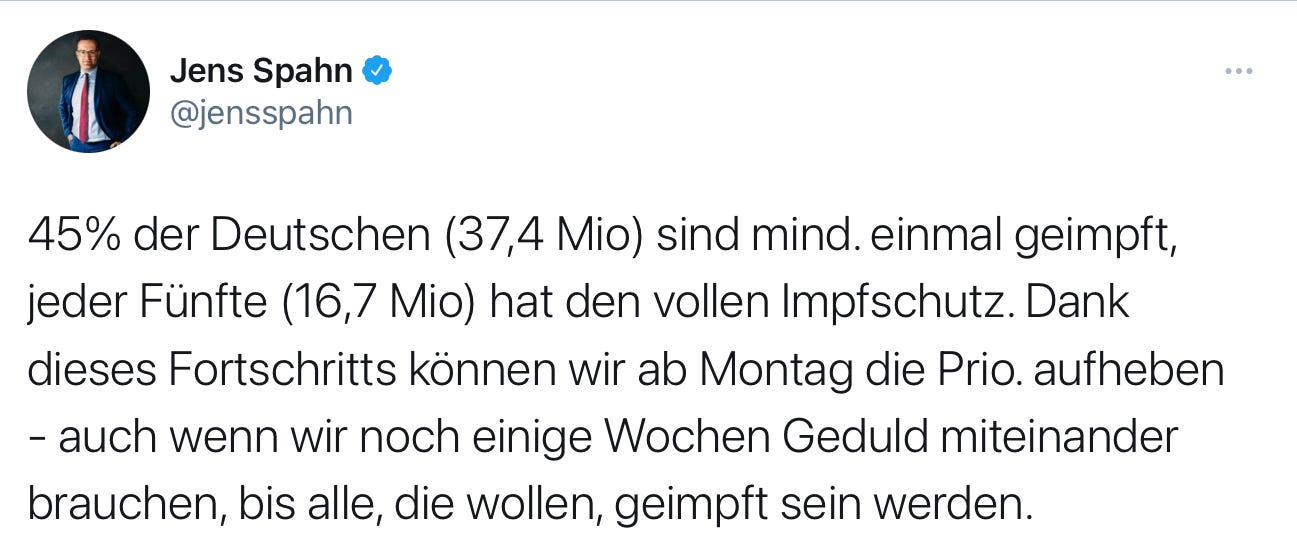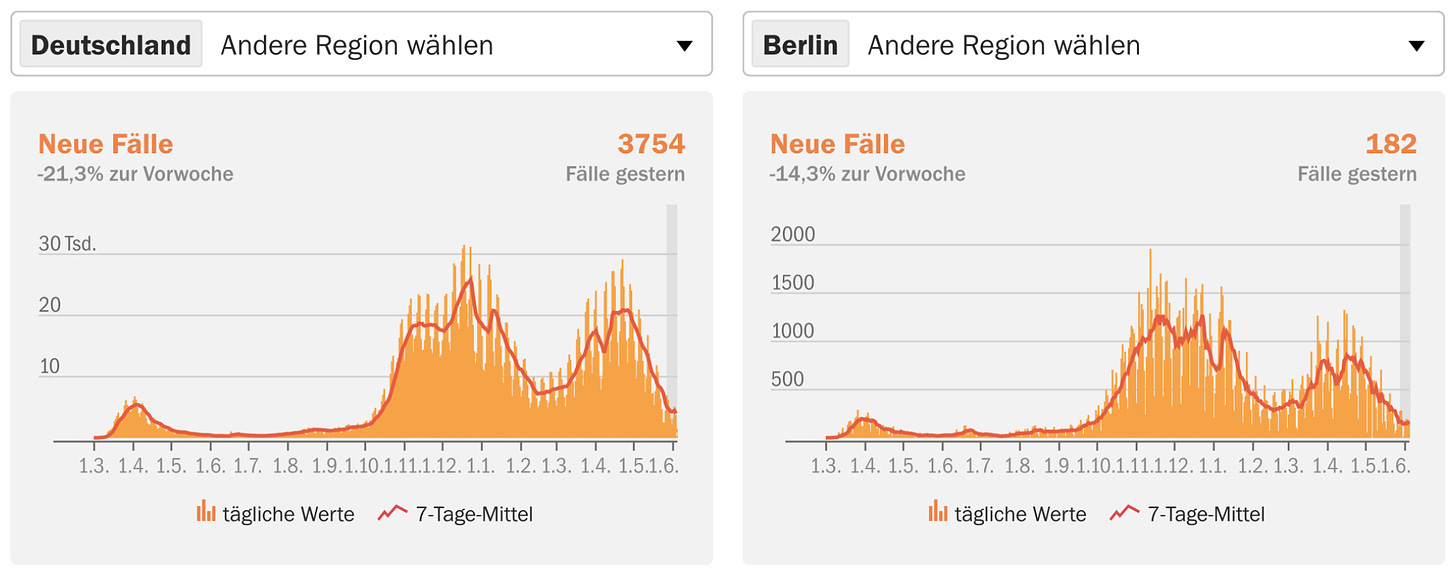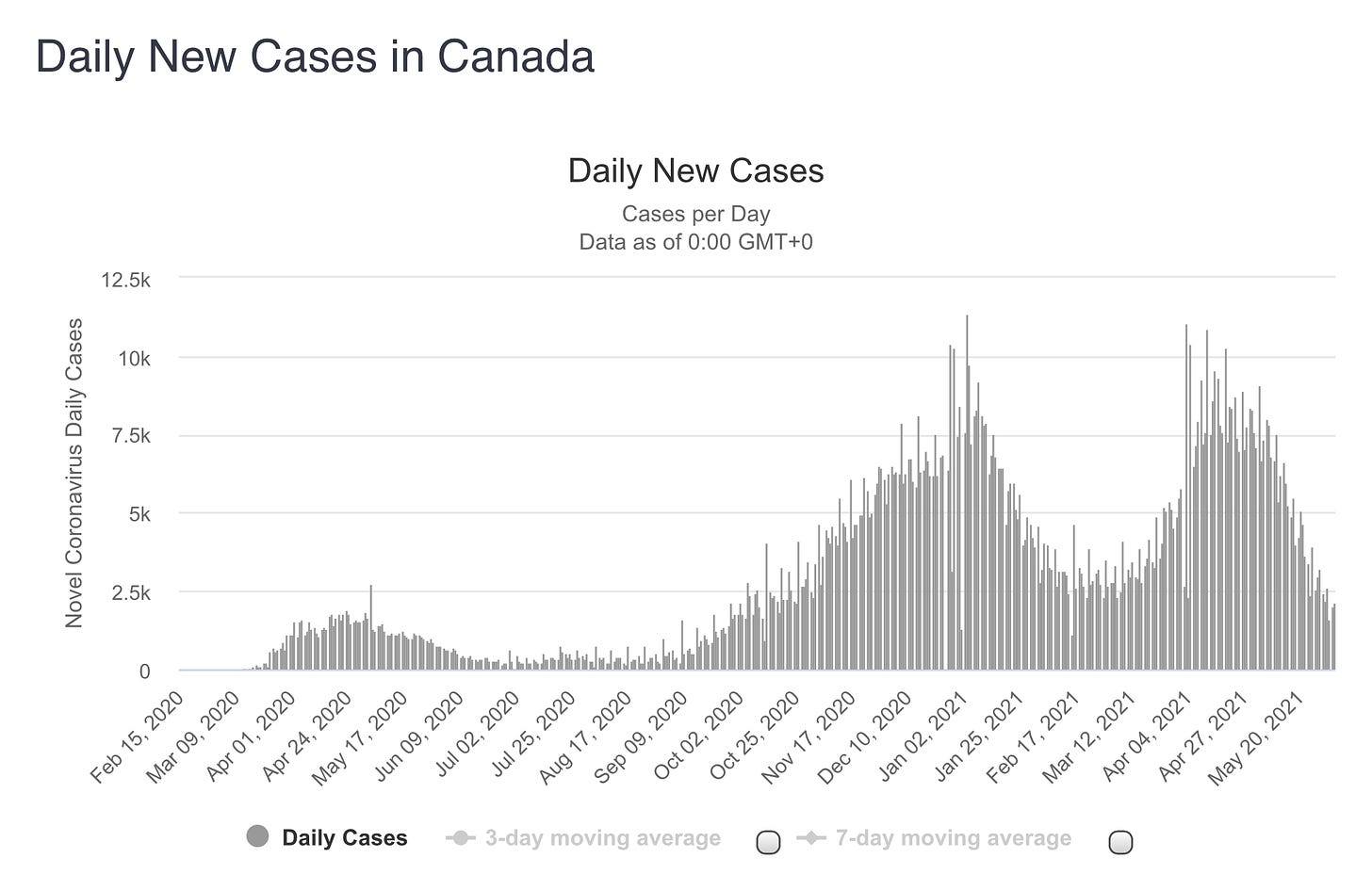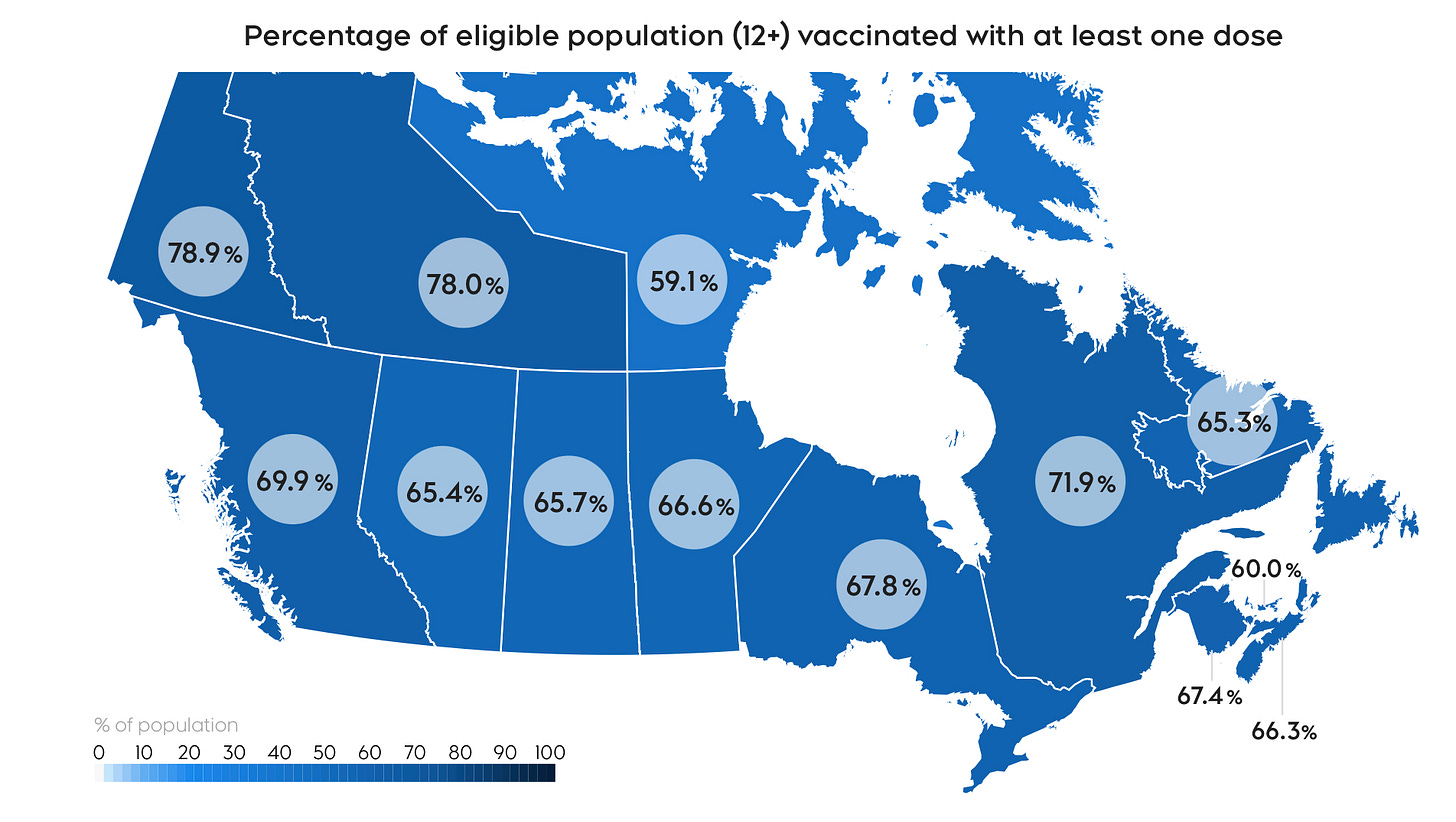🇩🇰
More of Europe is opening up for travel from Denmark. Danish Foreign Affairs announced today that Germany, Italy, Austria, and Slovakia have all been downgraded from orange to low-risk yellow. Travelers from those countries are not required to have a COVID test to fly to Denmark, nor will mandated quarantines apply.
As well, regions in some other European countries have also been declared low-risk yellow. They are Peloponnese in Greece, Jadranska Hrvatska in Croatia and Zug and Ticino two cantons in Switzerland.
In all cases, the change comes into force as of 4pm tomorrow (Saturday) afternoon.
Everything above joins the other countries and regions already declared low COVID risk yellow within the European Union below.
Outside of the EU Ceuta, a small Spanish enclave in Morocco, also goes from orange to low risk yellow.
-
A majority of parties in the Danish Parliament have agreed on a package to help try to kickstart the summer tourism season out of the pandemic funk. The package of funds and incentives is aimed at everything from restaurants to enabling travel around Denmark.
Like last summer ferry travel will be made free to all of Denmark’s islands. The offer for free ferry travel covers pedestrians, cyclists, and cars with disabled parking signs.
Also, like last year, a ‘travel passport’ will be offered. It will allow for unlimited travel on all public transport in the country, including buses, metro, and trains, for an eight-day period.
Grants of up to 35,000 DKK are being made available to restaurants to provide discounts or hold events to attract tourists into their eatery.
-
The Danish Agency for Patient Safety is now confirming the “special variant” behind an outbreak on Bornholm is the B.1621 mutation. The strain was first identified in Colombia in January. There is evidence that it is more contagious than the original coronavirus. It also has the E484K ‘escape’ mutation, meaning it can slip by the body’s defenses, the question is to what degree.
The European Center for Disease Prevention and Control has the variant on its ‘Variants of Interest’ list. Strains considered truly worrisome are categorized as ‘Variants of Concern.’ ECOC says infections of the variant in Europe are almost all exclusively travel-related.
-
Danish Statsminister Mette Frederiksen received her first vaccination dose in Copenhagen today. Afterward she took to social media to mark the event.
“Now it’s my turn. The first important shot. Thanks to Huda who gave me the vaccine. And to everyone who makes it so that the Danes can get vaccinated as soon as possible. This is impressive work.”
-
Denmark is reporting 927 COVID infections and no new coronavirus deaths in the last day.
Yesterday there were 662,746 corona tests done, 161,161 PCR and 501,585 rapid, for a (PCR only) positivity percentage of 0.58%.
Another district in Aalborg Kommune has been ordered to lockdown. Vor Frue Sogn has seen 50 new infections in the last week triggering the automatic shutdown. It is the third parish in Aalborg to have to go into a mandated lockdown, the other two are Vor Frelsers Sogn and Budolfi Sogn. All three parishes border on each other.
-
COVID hospitalizations (145) have inched up (+2) while the number of infected people in an ICU (32) edged down (-2) and of those the number on a ventilator (22) also dropped slightly (-1).
On the vaccination campaign, to date 2,284,992 1st vaccine doses (39.1% of the population) have been administered while 1,332,248 people (22.8%) are now fully vaccinated.
Yesterday there were 59,815 total vaccinations done.
The Danish Health Authority says that vaccination invitations have been sent out to everyone in the country between the ages of 16 and 19 years old. Along with the invitation, an information letter has also been sent to their parents or person who had custody.
Unit Manager Bolette Søborg:
"Although, as a 16- and 17-year-old, according to the Health Act, you can make a decision to be vaccinated, the parents must be aware that their child has been invited for vaccination. Therefore, it is our clear recommendation that you talk to your parents or another adult about the vaccination offer first.”
Søborg says the letter to parents will also help cover any bases for teens in the group who do not have eBoks, Denmark’s digital post system. Staff at vaccination centers will also check with young people to see if they have discussed vaccination with their parents beforehand. The health board says some may be asked to call their parents if they aren’t in the loop.
-
The Staten Serum Institut says 7.4% of the latest group, those 16 to 19 and 45 to 49 years old, to get invited to begin the vaccination process have already received a shot.
Acting Head of Department Palle Valentiner-Branth:
“The young people have a high burden of infection and are therefore also more likely to carry the infection further, therefore it is an important group to get vaccinated. We hope and expect that vaccinations will increase continuously in this target group, just as we see for the other groups.”
Vaccination rates for those with one dose among the other target groups:
60 to 64 year olds - 87.3%
55 to 59 year olds - 73.5%
50 to 54 year olds - 48.4%
The Staten Serum Institut says it is also monitoring vaccinations administered under the optional scheme. As of June 4th it says 5,142 people have registered as having been vaccinated with Johnson & Johnson.
🇸🇪
Sweden has added 1,069 infections and another 11 corona deaths since yesterday’s update. Just reminder that the numbers may be artificially low due to a reporting lag from the infectious disease database being taken offline for the better part of a week. Work is still being done to work out the kinks.
To date 3,859,437 1st dose (47.1% of pop) and 1,692,883 2nd vaccine doses (20.7%) have been administered.
-
Region Stockholm recorded 385 new infections yesterday. It also is reporting 35 coronavirus deaths since it last updated fatality stats on May 25th.
Acting Director of Health and Medical Care Johan Bratt says the pandemic situation continues to improve in the capital region.
“Both the number of those found infected and the number of patients with COVID who need hospital care continue to decrease. This is largely due to the fact that more and more people are getting vaccinated. Yesterday we welcomed everyone who was born in 1981 and earlier to book their vaccination. As a result, in just a few hours yesterday we had over 51,000 bookings for vaccination times. Our staff are working hard to vaccinate as many people as possible as soon as possible. It is important that we are well equipped for the autumn to reduce the risk of renewed spread of infection.”
To date there are 112 patients in emergency rooms or geriatric care of these 36 are in an ICU.
The region notes due to the infectious disease database being shutdown last week there is still a lag in reporting that is impacting regional numbers.
-
Region Stockholm is putting resources in place to deal with people struggling with long-COVID, where symptoms persist months after recovering from a bout with the coronavirus.
Head of Health and Medical Care Administration's Lena Hanberg:
“First and foremost, people who have problems after recovering from COVID should first get their care through their family doctor where possible. This means that those who have problems must first contact their health center for diagnosis and treatment. Special training has taken place so that employees in primary care have the right knowledge to meet patients with long-COVID. A major investment is also being made with the establishment of three positions as a consultation support from Karolinska University Hospital in terms of referral, investigation, and treatment advice.”
She says for patients still struggling with coronavirus symptoms more than three months after recovery, especially those where it is impacting their work or quality of life, then they can get referred to a new long-COVID clinic at Karolinska University Hospital Huddinge.
🇫🇮
Finland has registered 125 infections and had no new virus deaths since its last update yesterday.
To date 2,582,439 1st vaccination doses (46.3% of the population) and 574,902 2nd doses (10.3%) have been administered.
🇳🇴
Norway has added 317 infections and had no new corona deaths since yesterday’s update.
COVID hospitalizations (62) are down (-3) ICU numbers (26) crept up (+1) ventilator numbers (12) are unchanged.
To date 32.60% of Norwegians have had one dose and 21.47% have had both.
-
The Norwegian Institute of Public Health says switching from AstraZeneca to Pfizer/BioNTech between first and second doses doesn’t degrade vaccine efficacy. The institute cites four studies from the United Kingdom, Spain, and Germany in making the claim. Only one of those studies has been peer-reviewed. An efficacy study also continues in Norway.
Chief Physician Sara Viksmoen Watle:
“The study results indicate that those who are vaccinated with a combination of the two vaccines get at least as good levels of protective antibodies after the second dose as those who have received two doses of mRNA vaccine, also against different virus variants.”
Before it was shelved in Norway, AstraZeneca was used mainly to vaccinate healthcare workers. Efforts to finish their vaccinations using Pfizer or Moderna as the second dose are well underway. The health institute says that uptake is very high. Overall, 74% who had AstraZeneca as a first dose have had an mRNA vaccines as a second. Of those, 99,080 have been Pfizer and 1,738 have been Moderna. Among the individual professions, uptake has been highest among doctors, 89%, and lowest among nursing assistants, 74%.
-
The Norwegian Institute of Public Health believes that the infections situation and vaccination efforts, especially among healthcare staff, are at a point where infection-control measures in health facilities can be eased.
Department Director Line Vold says the infection situation locally will have to factor in, as well as vaccination rates of staff within each health-care unit.
“This now makes it justifiable with relief for employees in the health service who are protected against COVID due to vaccination or prior infection. Today's infection control measures in the health service are resource-intensive and can create challenges for the implementation of normal operations and the work to ensure good follow-up of patients and residents. Knowledge transfer and training are also important, and easing the infection control routines for vaccinated people can simplify this work.”
The institute has tabled a checklist to guide facilities in easing up on restrictions. They include making sure infection-control measures remain in place, staff are trained on them, and that there is good vaccination coverage among staff and patients. The vaccination status of patients will become part of the knowledge base dictating their care. Close contacts will also need to be tracked in case of an outbreak.
For fully vaccinated healthcare staff, they shouldn’t have to wear personal protective equipment anymore, unless they are in close contact with an infected patient. They can also do away with wearing a mask, unless again, they are in close contact with a COVID positive patient. Close contact is defined as being within one meter or less. Management is also recommended to make accommodations for those who are not vaccinated. For example, in a staff meeting, those who are not vaccinated must have room to maintain social distancing, even as fully vaccinated staff can attend as normal.
🇩🇪
Germany’s Health Minister Jens Spahn says 37.4 million people (45% of the population) in Germany had had one vaccination dose while 16.7 million, one of five people in Germany, are now fully vaccinated.
While strict restrictions almost certainly played a part in plummeting infections rates the country’s massive vaccination rate must also be a factor.
🇨🇦
Canada reported 2,172 new infections yesterday while suffering another 32 coronavirus deaths
On the Canadian vaccinations campaign, to date there have been 22,747,640 1st dose vaccinations (59.85% of the adult population) while 2,491,536 people are now fully vaccinated.
As for Ontario today Health Minister Christine Elliott tweeted “Ontario is reporting 914 cases of COVID19 and nearly 32,300 tests completed. Locally, there are 214 new cases in Toronto, 169 in Peel, 69 in Durham, 59 in Hamilton and 57 in the Porcupine Health Unit region. As of 7:00 p.m. yesterday, 9,661,327 doses of the COVID-19 vaccine have been administered, including 168,322 doses administered yesterday.” There were also 19 more deaths.
Quebec reported 279 infections and four more virus deaths today.
In Atlantic Canada, Nova Scotia reported 15 infections. New Brunswick had 10. While Newfoundland and Labrador had two.
Manitoba had 329 infections and four more fatalities yesterday.
There were 131 infections and another two deaths in Saskatchewan yesterday.
Alberta recorded 296 infections and suffered five more virus deaths.
B.C. reported 199 new infections yesterday, its 3rd straight day under 200, while losing another another two lives to the virus.





